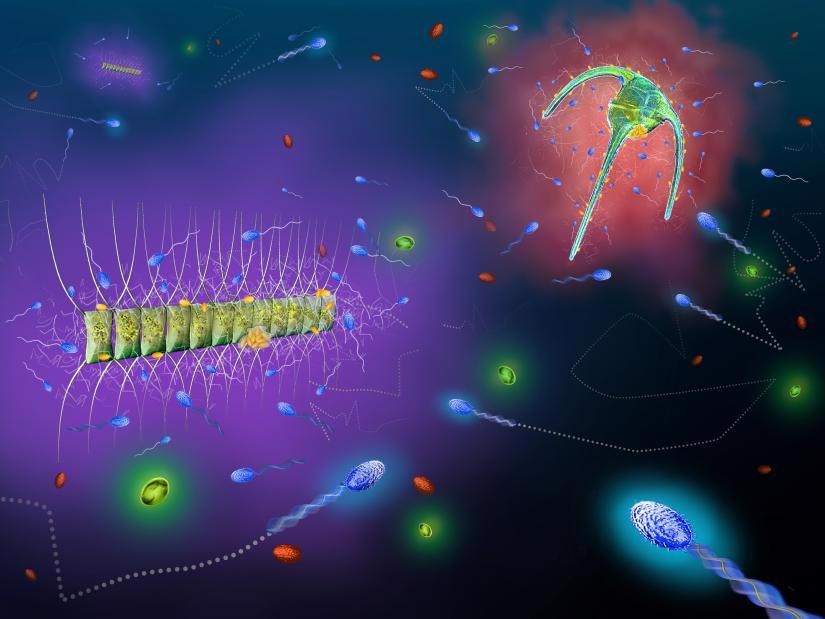Reviewed by Danielle Ellis, B.Sc.Apr 21 2022
Each teaspoon of seawater includes about a million marine microorganisms, which are invisible to us. These microscopic organisms play critical roles in regulating the chemical cycles that regulate climate and shape the health of the world’s oceans. However, are they aimless scavengers or deliberate hunters?
 A depiction of bacteria foraging between nutrient patches in the ocean. Image Credit: Justin Seymour, Jean-Baptiste Raina and Glynn Gorick.
A depiction of bacteria foraging between nutrient patches in the ocean. Image Credit: Justin Seymour, Jean-Baptiste Raina and Glynn Gorick.
According to recent research, bacteria in the ocean behave similarly to many foraging animals, moving through their surroundings while searching and choosing their preferred “meal” from a soup of chemicals in saltwater.
Scientists from the University of Technology Sydney (UTS), in partnership with researchers from ETH Zurich and the University of Queensland, used specially designed microchips to get a “bacteria’s-eye view” of the ocean and demonstrate that microbes, in the natural surroundings, use advanced behavioral patterns to identify and move towards foods they desire.
We had some idea that microbes could swim around their immediate environment to find and exploit food patches, but the only available evidence came from laboratory experiments, which are often not very realistic or representative of natural environments. This kind of behavior had never been comprehensively examined in the environment among natural populations of microbes.”
Dr Jean-Baptiste Raina, Study Lead Author and Microbial Ecologist, University of Technology Sydney
“Now, for the first time, we’ve been able to show that the swimming behavior of microbes in the natural environment is governed by the attraction of bacteria to specific chemical cues, which dictates important processes and interactions that structure the base of the marine food web,” Dr Raina added.
Dr Raina explained that the researchers employed microfluidics to create a unique “bacteria trap” that they used to analyze bacteria’s feeding preferences in coastal waters around Sydney. The Gordon and Betty Moore Foundation and the Australian Research Council provided support for the development of this novel technique.
Professor Justin Seymour, the study’s senior author, said the findings showed how activities occurring over short distances in the ocean could have large-scale consequences.
When we think about how small a bacterium is, it is easy to dismiss the consequences of its behavior. However, because marine bacteria are so numerous and diverse, the way they find, consume, and recycle chemicals in seawater can have a profound influence on processes that control the global climate and the productivity of the marine food web.”
Justin Seymour, Study Senior Author and Professor, University of Technology Sydney
“This work has provided us with a unique perspective of the way bacteria navigate and explore their microscopic habitat,” says Seymour.
“Everybody’s seen pictures of schools of fish being targeted by feeding sharks. Here we are looking at a similar process from a microbial perspective, where bacteria are swimming into a patch of chemicals in a kind of feeding frenzy,” Seymour concluded.
Source:
Journal reference:
Raina, J-B., et al. (2022) Chemotaxis shapes the microscale organization of the ocean’s microbiome. Nature. doi.org/10.1038/s41586-022-04614-3.